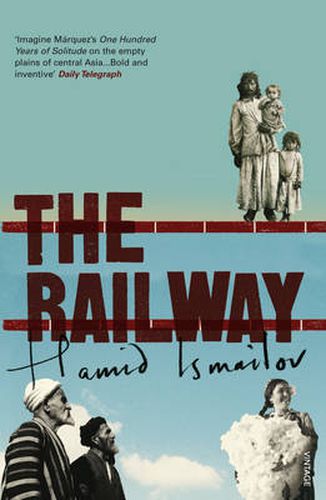Readings Newsletter
Become a Readings Member to make your shopping experience even easier.
Sign in or sign up for free!
You’re not far away from qualifying for FREE standard shipping within Australia
You’ve qualified for FREE standard shipping within Australia
The cart is loading…






‘In the steppe near Tashkent they came upon a never-ending ladder with wooden rungs and iron rails and that stretched across the earth from horizon to horizon . Whistling and thundering, a snake-like wonder hurtled past them, packed both on the inside and on top with infidels shouting and waving their hands. “The End of the World!” thought both Mahmud-Hodja the Sunni and Djebral the Shiite.’ Set mainly in Uzbekistan between 1900 and 1980, THE RAILWAY introduces to us the inhabitants of the small town of Gilas on the ancient Silk Route. Among those whose stories we hear are Mefody-Jurisprudence, the town’s alcoholic intellectual; Father Ioann, a Russian priest; Kara-Musayev the Younger, the chief of police; and Umarali-Moneybags, the old moneylender. Their colourful lives offer a unique and comic picture of a little-known land populated by outgoing Mullahs, incoming Bolsheviks, and a plethora of Uzbeks, Russians, Persians, Jews, Koreans, Tatars and Gypsies. At the heart of both the town and the novel stands the railway station - a source of income and influence, and a connection to the greater world beyond the town. Rich and picaresque, THE RAILWAY is full of colour. Sophisticated yet with a naive delight in storytelling, it chronicles the dramatic changes felt throughout Central Asia in the early twentieth century.
$9.00 standard shipping within Australia
FREE standard shipping within Australia for orders over $100.00
Express & International shipping calculated at checkout
‘In the steppe near Tashkent they came upon a never-ending ladder with wooden rungs and iron rails and that stretched across the earth from horizon to horizon . Whistling and thundering, a snake-like wonder hurtled past them, packed both on the inside and on top with infidels shouting and waving their hands. “The End of the World!” thought both Mahmud-Hodja the Sunni and Djebral the Shiite.’ Set mainly in Uzbekistan between 1900 and 1980, THE RAILWAY introduces to us the inhabitants of the small town of Gilas on the ancient Silk Route. Among those whose stories we hear are Mefody-Jurisprudence, the town’s alcoholic intellectual; Father Ioann, a Russian priest; Kara-Musayev the Younger, the chief of police; and Umarali-Moneybags, the old moneylender. Their colourful lives offer a unique and comic picture of a little-known land populated by outgoing Mullahs, incoming Bolsheviks, and a plethora of Uzbeks, Russians, Persians, Jews, Koreans, Tatars and Gypsies. At the heart of both the town and the novel stands the railway station - a source of income and influence, and a connection to the greater world beyond the town. Rich and picaresque, THE RAILWAY is full of colour. Sophisticated yet with a naive delight in storytelling, it chronicles the dramatic changes felt throughout Central Asia in the early twentieth century.